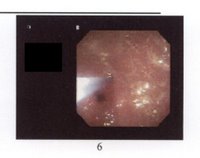 Moderation in practice of medicine is just as important as it is in life. Too much of a good thing can sometimes kill you.
Moderation in practice of medicine is just as important as it is in life. Too much of a good thing can sometimes kill you.In this case, the "good thing" are the recombinant erythropoetins -- Epogen, Procrit, and the latest one, Aranesp. They are used to treat anemia in patients with chronic kidney disease (CKD). Anemia is due to decreased production of erythropoetin by the failing kidneys.
According to NYTimes, "dialysis patients should have a target hemoglobin level of 10 to 12 grams per deciliter of blood. In its most recent guideline, the panel of doctors overseen by the kidney foundation said a target of 11 to 13 grams was appropriate.
In practice, almost all dialysis patients receive the drugs, and almost none have hemoglobin levels below 11 grams after treatment. About half have levels of more than 12 grams, almost 20 percent of patients have levels above 13 grams.
The differences may seem small, but one of the studies published in The New England Journal found that patients treated to an average hemoglobin level of 12.6 grams had a 34 percent higher risk of death or serious heart problems than those treated to a level of 11.3 grams."
The first author of the NEJM study was a "star" lecturer at one the lunch symposia at the 2006 ASN Renal Week.
In conclusion, it makes sense to correct anemia in CKD up to a point. Currently, this point seems to be 11 g/dL.
Update 03/09/2007:
FDA will add a black box warning to the label of erythropoiesis-stimulating agents (ESAs) due to increase in serious side effects and greater number of deaths in patients treated with these agents.
Update 3/28/2007:
FDA added a black box warning to the labels of all currently available Erythropoiesis Stimulating Agents (ESAs). Source: ASN.
Targeting higher hemoglobin levels in CKD increases risks for stroke, hypertension, and vascular access thrombosis and probably increases risks for death, serious cardiovascular events, and end-stage renal disease. The mechanisms for harm remain unclear.
References:
Treatment of Anemia Questioned. NYTimes.
Correction of Anemia with Epoetin Alfa in Chronic Kidney Disease. NEJM.
Normalization of Hemoglobin Level in Patients with Chronic Kidney Disease and Anemia. NEJM.
American Society of Nephrology (ASN) Renal Week 2006
Amgen, J&J anemia drugs to carry new warning: FDA. Scientific American, March 09, 2007.
Anemia Drugs: How Much Is Too Much? WSJ Health Blog, 4/17/2007.
Image source: Wikipedia, public domain.References:
Treatment of Anemia Questioned. NYTimes.
Correction of Anemia with Epoetin Alfa in Chronic Kidney Disease. NEJM.
Normalization of Hemoglobin Level in Patients with Chronic Kidney Disease and Anemia. NEJM.
American Society of Nephrology (ASN) Renal Week 2006
Amgen, J&J anemia drugs to carry new warning: FDA. Scientific American, March 09, 2007.
Anemia Drugs: How Much Is Too Much? WSJ Health Blog, 4/17/2007.
Updated: 07/06/2010













